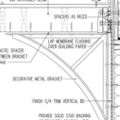Used polyiso boards being sold
I just joined as I enjoy this site quite a lot and it makes seem smart when I discuss housing construction with other. For that I thank you. My question is that I notice a lot of used Polyiso for sale that were used in construction and removed 4-10 years later. I am planning on using this material to envelope my house as it seems better and cheaper than XPS. But I am curious why in general are these removed after a short period of time? Is there something that I am missing.
Eric Vianna
GBA Detail Library
A collection of one thousand construction details organized by climate and house part










Replies
Eric,
The source of these recycled panels of polyiso is (a) commercial buildings that are being re-roofed, or (b) commercial buildings that are being demolished.
In North America, commercial buildings have a short lifespan. I have seen a McDonalds restaurant being constructed, and then torn down 10 years later so that a new McDonalds restaurant can be built 500 feet away, in a place just a little closer to the Interstate.
In many cases, re-roofing jobs require insulation upgrades. If the old polyiso was rated at R-13 or R-18, the specs might call for new R-30 insulation. In some cases, the budget includes a line item to remove the existing insulation and replace it with new insulation. This practice is wasteful but common.